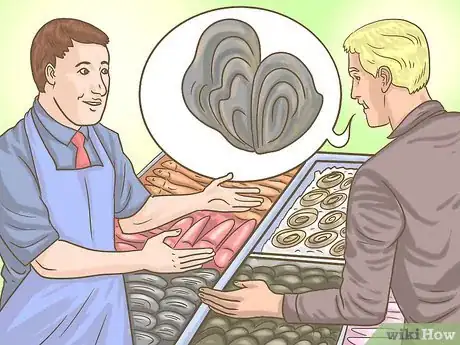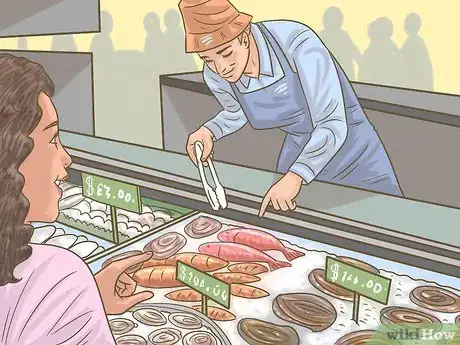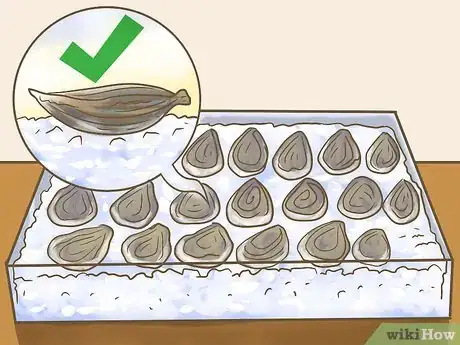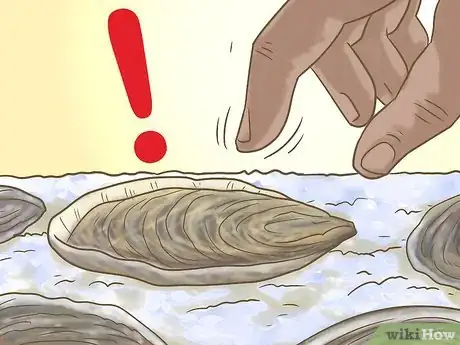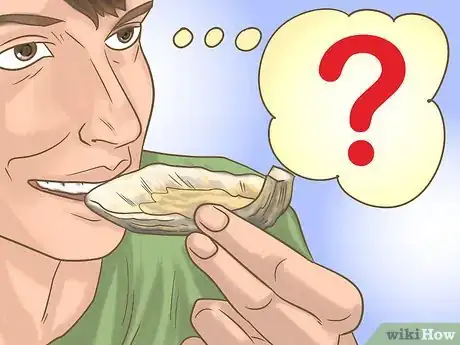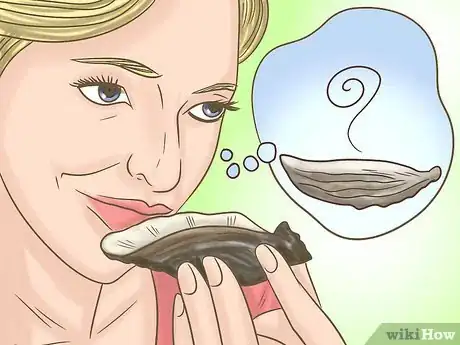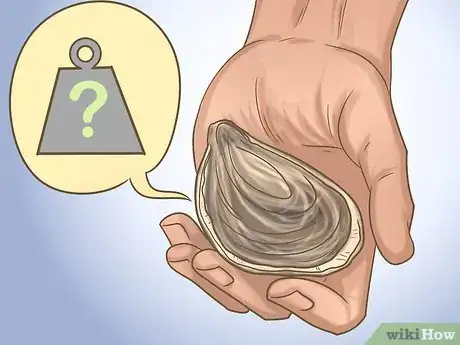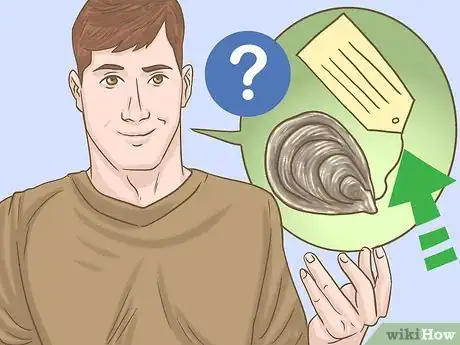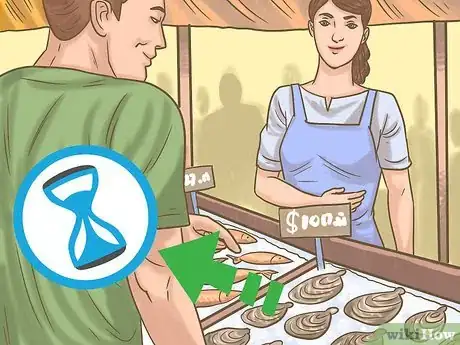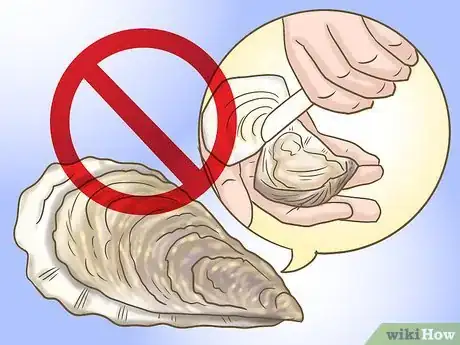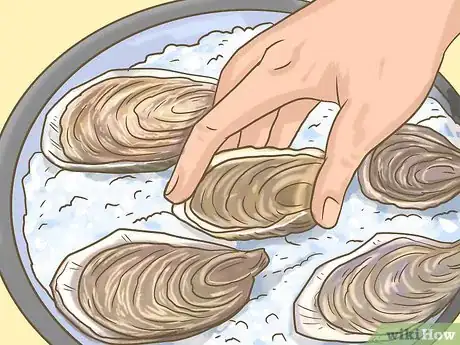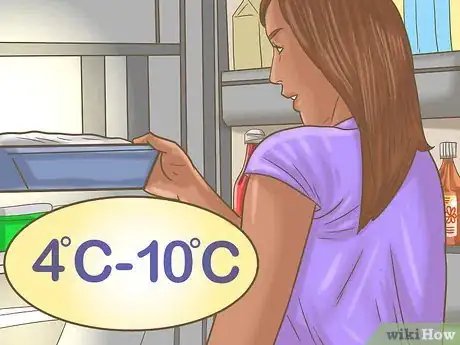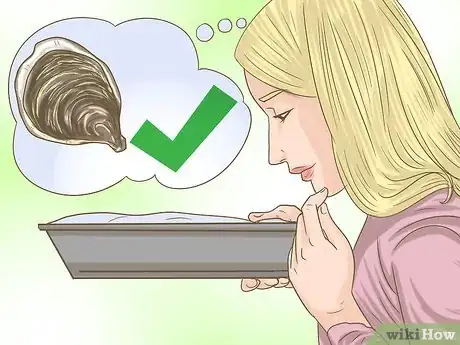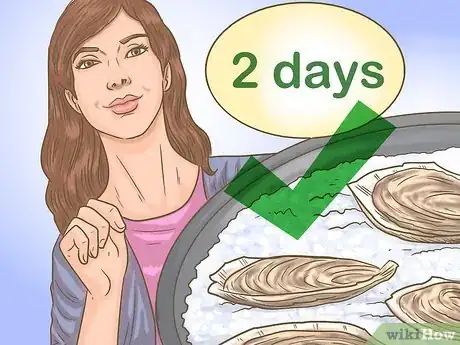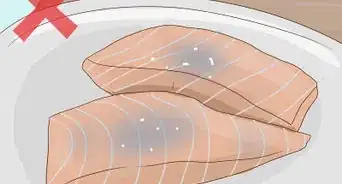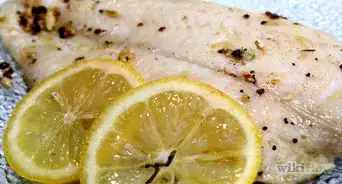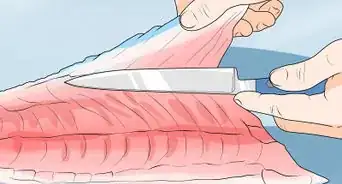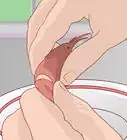This article was co-authored by wikiHow Staff. Our trained team of editors and researchers validate articles for accuracy and comprehensiveness. wikiHow's Content Management Team carefully monitors the work from our editorial staff to ensure that each article is backed by trusted research and meets our high quality standards.
There are 12 references cited in this article, which can be found at the bottom of the page.
This article has been viewed 28,768 times.
Learn more...
Eating fresh oysters can be a healthy, sustainable option for any seafood lover, adding a hint of sophistication and pageantry to your dining experience. However, sourcing, buying and storing oysters can be an intimidating experience. With some basic insight into what to look for when purchasing fresh oysters, you will ensure your full enjoyment of this culinary treat.
Steps
Locating Fresh Oysters
-
1Visit your local fishmonger. Ask your fishmonger when they receive their oyster delivery and try to buy on, or as close to that day as possible.[1] This ensures you will get the freshest oysters.
-
2Go to the local farmers market. A lot of oyster farmers sell directly at farmers markets, so the oysters wouldn't have traveled far, and will be nice and fresh. This is a great opportunity to get to know your farmers, who have an indispensable wealth of knowledge when it comes to their oysters.[2]Advertisement
-
3Go to your local supermarket. The fish counter at your local supermarket should stock fresh oysters. Supermarket shellfish can be sourced from various locations, so ask the person at the fish counter where their oysters are from, and when they were delivered.
-
4Look into buying your oysters online. Some fishmongers offer overnight delivery within 24 hours, straight to your door. [3] Do an internet search of your local area to see if there are any available services near to you. This may be a benefit to you if you live in a landlocked area.
Buying Your Oysters
-
1Look at how the oysters are displayed. Oysters on display should be kept cool by lying on a bed of ice. The cup-like part of the shell should be resting on the ice, with the flat top facing up. If they are not, more than likely the brine of the oyster will have drained, and the oyster may be dead. [4]
- Avoid oysters displayed in tanks. Oysters are able to live happily in a tank of water, but it is considered unsanitary, and will also drastically reduce their quality. They will continuously filter the water, which eventually flushes out all the flavours of its natural liquor.
-
2Avoid oysters that don't respond to being tapped. Fresh oysters are live creatures and should close their shells when tapped. If one is open and doesn’t close fully when disturbed, they are most likely dead and should not be purchased.
-
3Taste one of the oysters. Sampling is a good indicator of how fresh the oysters are. They should taste like the sea, salty and briny with a hint of sweetness. If it is at all bitter, spit it out, and do not eat it. The meat should be plump and surrounded by clear or slightly milky liquid known as the brine or liquor.[5]
-
4Sniff the oysters. Oysters should smell sea fresh, with a mild, salty scent. Avoid them if they have a strong, or rancid odour. [6]
-
5Feel the weight of the oysters. Oysters that have plenty of meat should feel weighty in your hand. If they feel too light they may have been drained of their brine or dead.
-
6Ask to see the oyster tag identification. Every fishmonger will have a tag that shows when and where the oysters were harvested, this will give you a good idea on the oysters’ freshness. The tag is a legal requirement and should be produced when asked.[7]
-
7Buy your oysters last. To avoid your oysters from going bad whilst you're out shopping, buy them last. [8]
Storing Your Fresh Oysters
-
1Do not shuck your oysters straight away. Avoid shucking your oysters until you are ready to eat them as they are best served freshly opened. Storing them in their closed shells rather than open, keeps them in their brine, locking in their flavor, and reduces the risk of them going bad.
-
2Place them in an open container. Store them as soon as possible either on a rimmed tray, metal bowl or open container. The ideal container is one that is open, and self-draining.[9] Gently place the oysters in the container with the cup part of the shell on the bottom, and the flat part facing upwards. This ensures you don’t drain their liquor.
- Avoid placing your oysters directly on ice or storing them in an airtight container, as this can potentially kill them. If you do keep them on ice, only do so for an hour. [10]
-
3Cover them with a damp tea towel or cloth. Soak a clean, thin tea towel or cloth in clean water. Ring it out thoroughly, and gently place it over the oysters in their container.
-
4Refrigerate your oysters. Place your oysters on a top shelf, towards the back of your fridge where it is coolest and away from open food. Ideally the fridge's temperature should be between 4 °C and 10 °C. [11]
-
5Check your oysters regularly. Drain any excess water at the bottom of the container. If the cloth has dried out, dampen it again and gently cover the oysters. It is normal to lose an oyster or two, but check that they are all still alive. If one is slightly open and doesn’t close again when tapped, don’t eat it, and throw it away.
-
6Store them for up to 2 days. Oysters are considered highly perishable, and so should be eaten sooner rather than later. Try to eat them within 24 hours of purchase, as this ensures that they are fresh and flavorsome, and will eliminate any potential of your oysters going bad.[12] .
- If you were given a use by date when buying your oysters, use that as a reference.
Warnings
- As with all raw and live shellfish there is the risk of them carrying a common type of bacteria called Vibrio parahaemolyticus or Vibriosis, which causes food poisoning. If you get ill after eating raw oysters seek medical attention.⧼thumbs_response⧽
- Oysters are generally eaten raw and have been known to be a health risk if they are not sourced or stored properly. It's recommended that you check your oysters for any defects, such as cracked shells, bad odors, or if the shell is open and doesn't close when tapped.⧼thumbs_response⧽
References
- ↑ https://www.foodsafety.gov/keep/types/seafood/index.html
- ↑ https://finder.localcatch.org/
- ↑ https://www.foodandwine.com/blogs/6-sources-super-fresh-mail-order-oysters
- ↑ https://www.fishwatch.gov/eating-seafood/buying-and-handling
- ↑ http://www.oregon.gov/oha/PH/HealthyEnvironments/Recreation/Documents/Shellfish-safety.pdf
- ↑ https://www.fda.gov/Food/ResourcesForYou/Consumers/ucm077331.htm
- ↑ https://www.fda.gov/Food/ResourcesForYou/Consumers/ucm077331.htm
- ↑ https://www.nhs.uk/live-well/eat-well/fish-and-shellfish-nutrition/
- ↑ https://www.brighton-hove.gov.uk/content/business-and-trade/food-safety/oysters
- ↑ https://www.doh.wa.gov/CommunityandEnvironment/Shellfish/RecreationalShellfish/IllnessPrevention/HandleStoreandCook
- ↑ http://www.dnr.sc.gov/marine/pub/seascience/oyster.html
- ↑ https://guide.michelin.com/hk/en/hong-kong-macau/dining-in/how-to-buy-and-store-oysters/news
- ↑ http://www.formerchef.com/2013/02/09/oysters-part-2-how-to-buy-clean-and-open-raw-oysters
